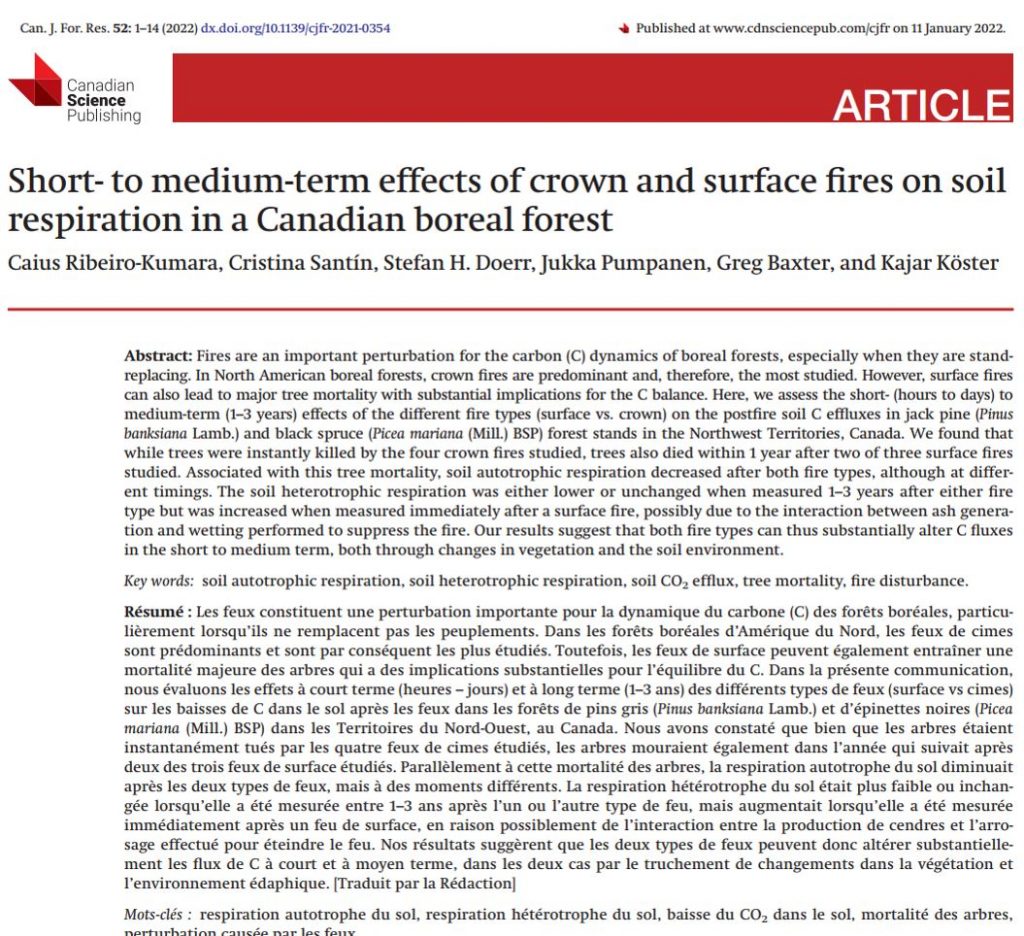Short- to medium-term effects of crown and surface fires on soil respiration in a Canadian boreal forest.

New paper by Ribeiro-Kumara et al., 2022, assessed the short- to medium-term effects of fire type on soil C fluxes of mixed jack pine and black spruce forest stands in Canada. Our study shows that both fire types can alter C fluxes in the short to medium term through changes in vegetation and the soil environment. Soil autotrophic respiration, represented here by the CO2 from tree roots, mycorrhiza, and the regenerating ground vegetation, decreased in sites affected by both crown and surface fires. In crown fire affected sites, autotrophic respiration was lower for at least 1–2 years after fire, whereas in surface fire affected sites, the decrease in autotrophic respiration was only significant 3 years after fire. In general, the instant tree mortality caused by crown fires drove the faster decrease in autotrophic respiration, whereas delayed mortality caused by surface fires delayed it. On the same time soil heterotrophic respiration in the humic and mineral layer (0–5 cm depth) increased immediately after the non-stand-replacing surface fire, possibly due to an agent (or combination of agents) not measured in this study.